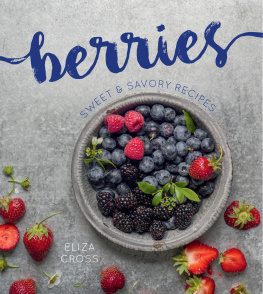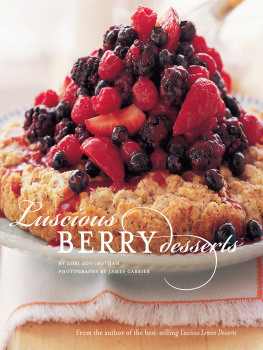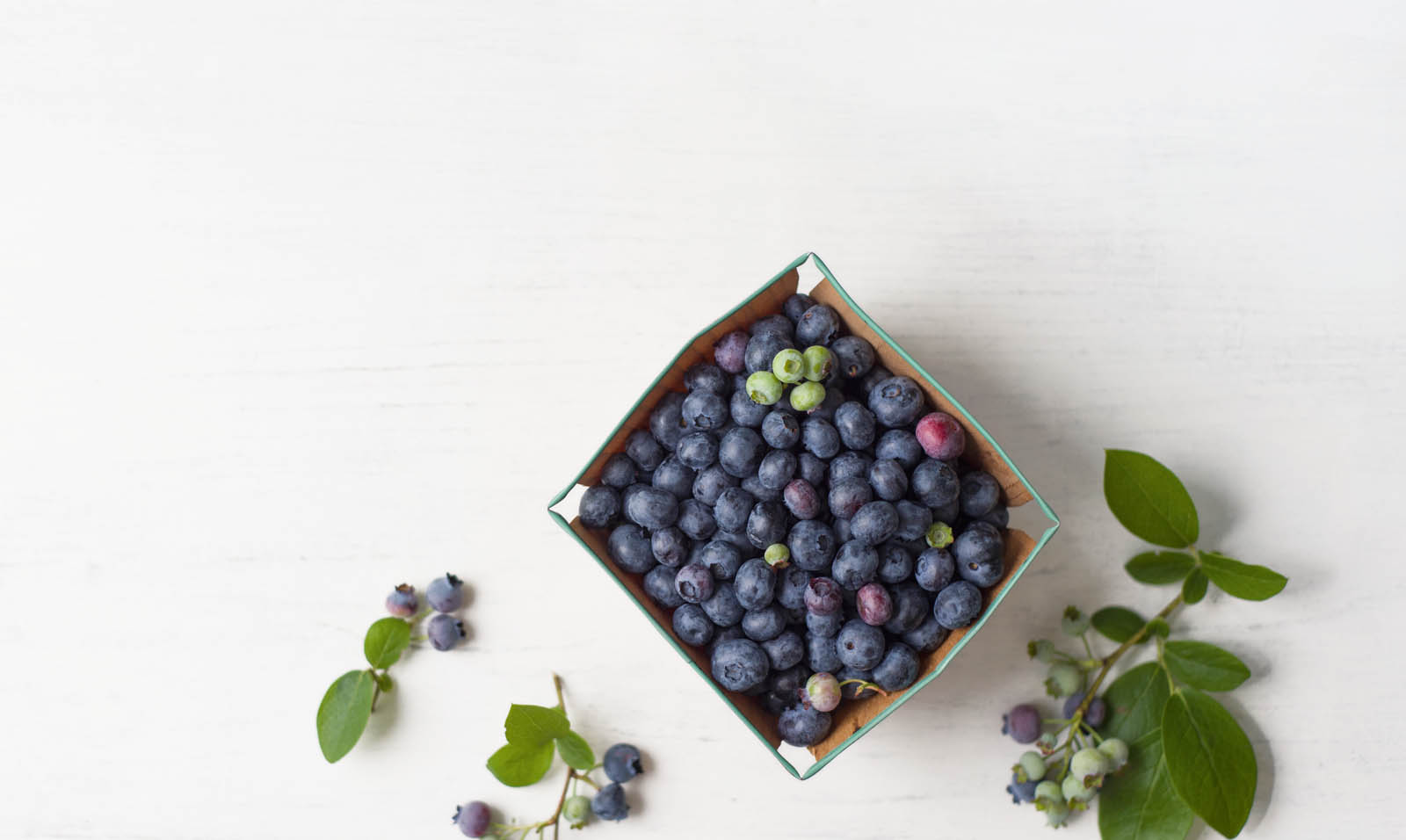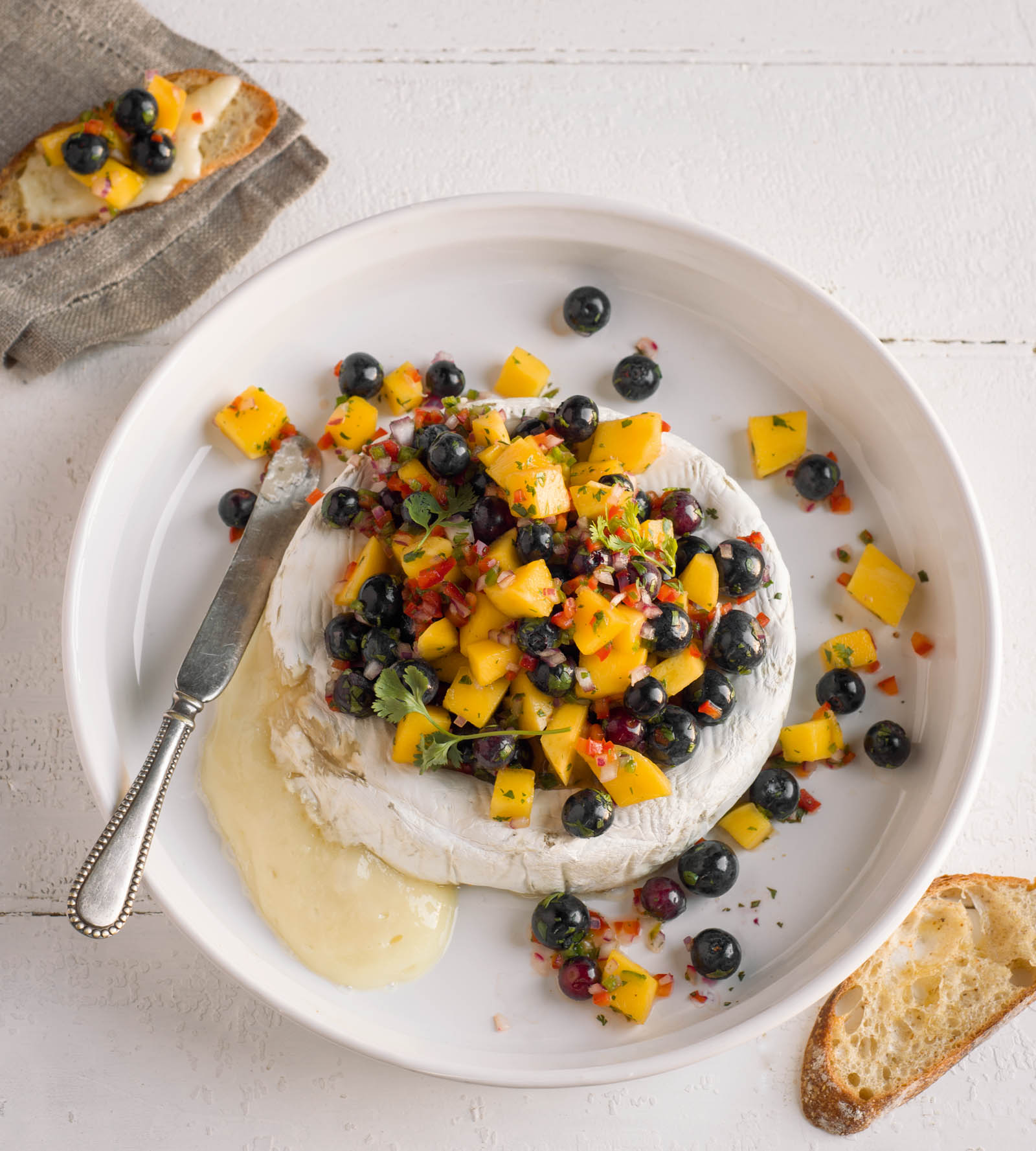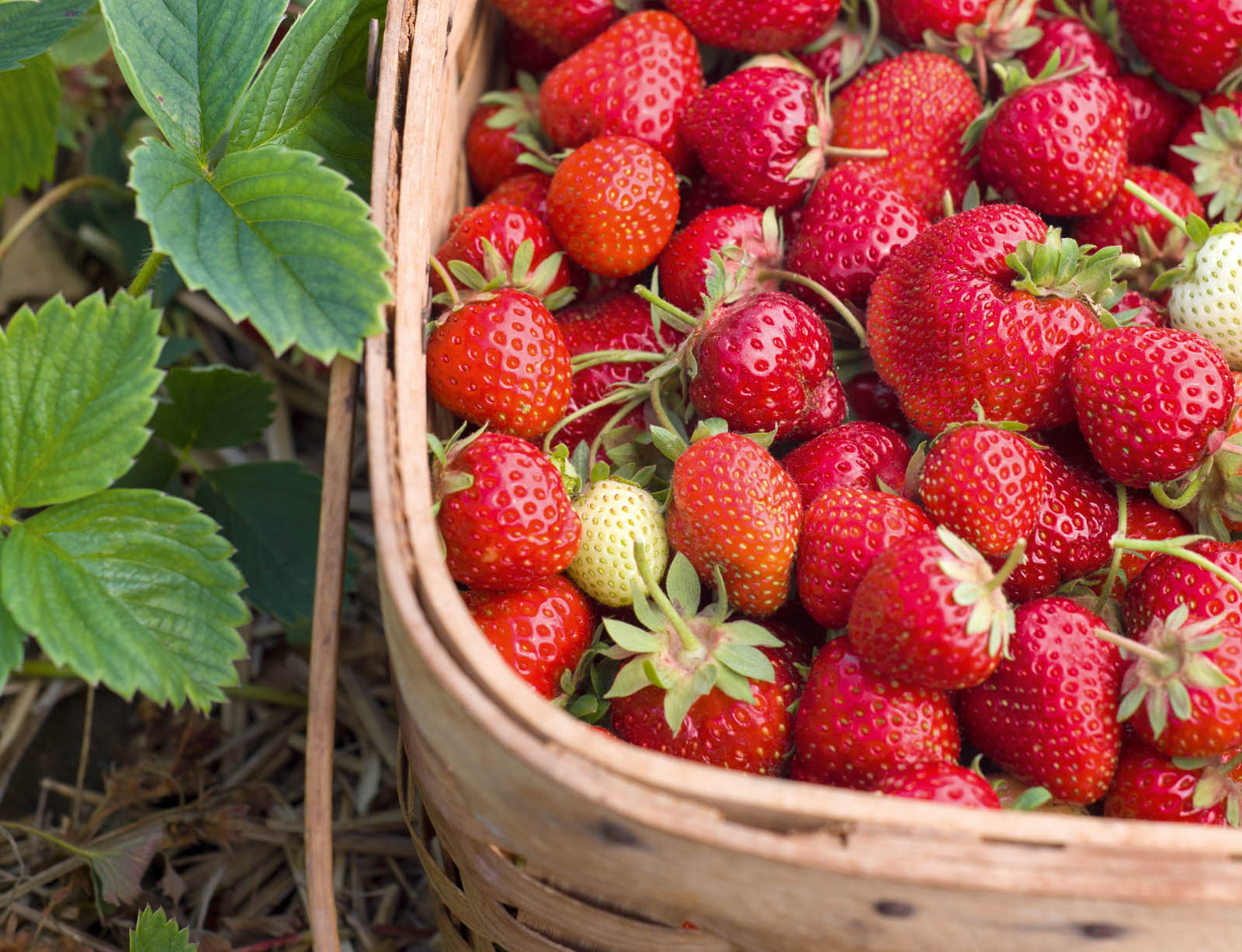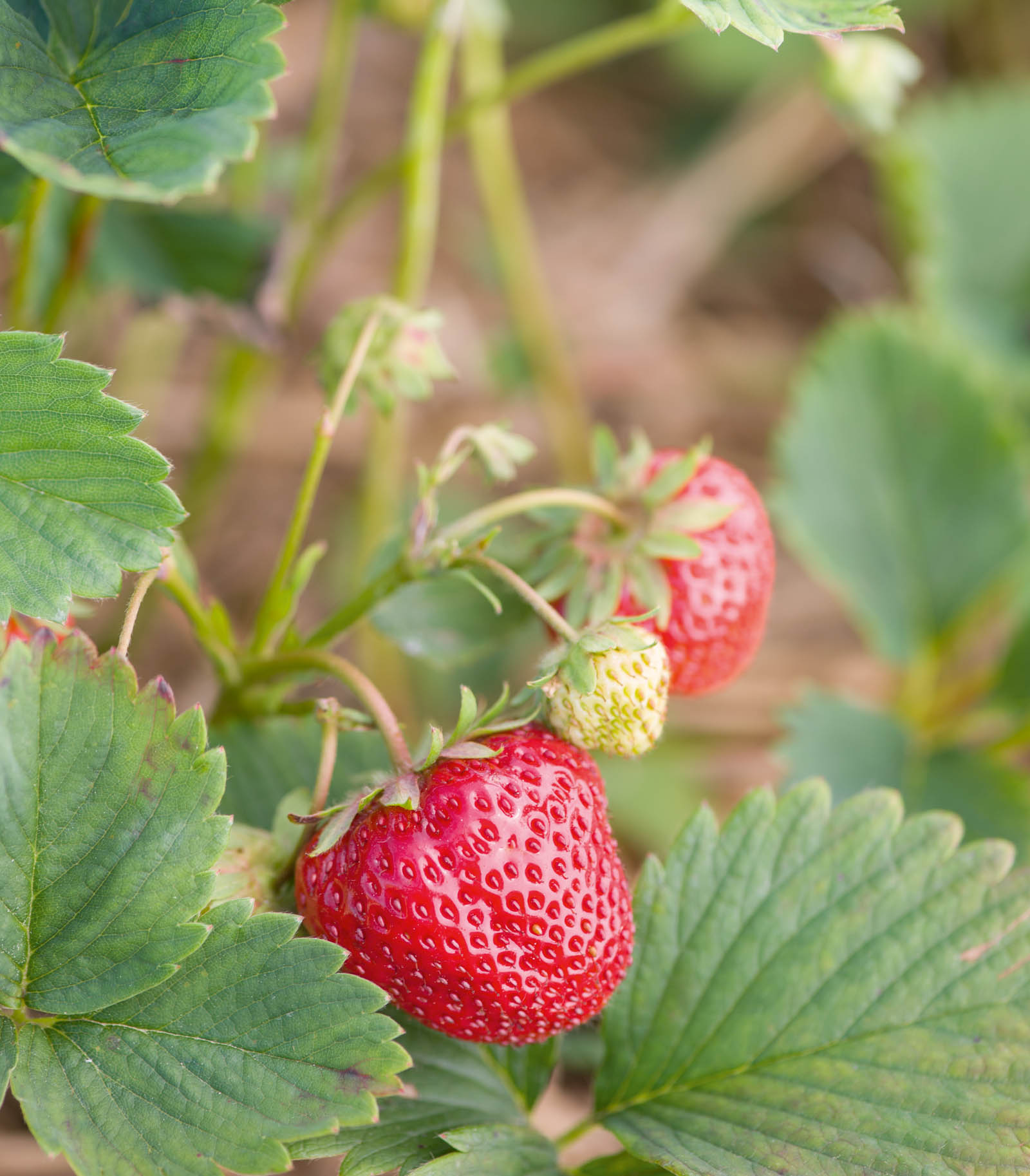Introduction
Fresh berries are among natures most delightful treats, and nearly everyone seems to have a sweet, vivid memory involving berries. Perhaps you recall gratefully eating handfuls of wild blackberries discovered during a long hike, or raiding the sun-ripened raspberries straight from the thorny canes in your mothers summer garden, or picking tiny ruby-red wild currants in a mountain meadow to make homemade jelly.
Berries still grow wild in some parts of the country, so it is still quite possible to experience the pleasurable surprise of discovering a stand of overgrown blueberry bushes or tasting a tiny sun-ripened alpine strawberry. Modern farming and shipping methods mean that we can buy many types of fresh and frozen berries year round at the market.
If finding berries is easy, defining and cataloging the diminutive fruits is a bit more complicated. Strawberries and raspberries do not fit the botanical definition of a fleshy fruit derived from a single ovary, so they are considered aggregate fruits rather than berries. On the other hand, avocados are technically considered berries, as are tomatoes, grapes, watermelons, eggplantsand even bananas. Who knew?
For the recipes in this book, we sidestepped the botanical definitions and used the most widely available fruits that we commonly think of as berries: blueberries, raspberries, blackberries, boysenberries, strawberries, and cranberries. Feel free to experiment and substitute your own favorite regional and native berries. Huckleberries, bilberries, and juneberries can often replace blueberries, for example, while marionberries, loganberries, boysenberries, mulberries, and raspberries will usually double for blackberries.
Berries are twice blessed since they offer amazing health benefits in addition to being downright delicious. Deeply colored berries like blueberries and blackberries contain some of the highest antioxidant levels of foods measured by the USDA. Antioxidants protect the body from damage caused by free radicals, and may even help manage or prevent several medical conditions including dementia and some cancers. When they are available, we prefer organic, wild, or homegrown berries to avoid the pesticide residue that can sometimes remain on conventionally grown berries.
While berries have a well-deserved reputation for sweetening pies and desserts, they can add color and flavor to salads, main courses, sauces, salsas, smoothies, and more. We hope you enjoy this collection of recipes celebrating the sweet, tangy, irresistible flavor of natures most delightful fruit.
Berry Picking & Prepping
Selection
When picking fresh berries in the wild or the garden, choose plump, deeply colored berries that slip easily from the stem; they are not fully ripe if you have to tug at them. Berries do not continue to ripen after being picked, so choose the ripest berries you can find. Roadside stands and farmers markets are often good places to find fresh, ripe berries. When buying berries in plastic containers, inspect the bottom side for excess liquid or moldtwo signs that you should choose another container. Finally, inspect the berries after you bring them home from the market, and discard any mushy, overripe, or moldy fruits right away.
Cleaning
If you discover bugs on freshly picked berries, make a salt water mixture with 1 cup of sea salt dissolved in 1 gallon of cool water. Soak the berries for 1 hour and rinse with cool water before using. Wait to gently rinse berries with cool water until just before eating or cooking with them. If you refrigerate delicate berries like raspberries and boysenberries for an hour before rinsing, they will be firmer and better able to sustain the rinsing process without damage.
Fresh strawberries have a leafy top called a hull, which will need to be removed (except for berries used for garnish). Pull off the leaves and use a small, sharp knife to cut a small cone from the top of the berry, or push a plastic drinking straw up from the bottom to the top of the berry to remove the hull. You can also use a small metal huller to pinch and twist off the hulls.
Storage
Store unwashed berries in the refrigerator, inside a paper towel-lined container to absorb moisture. Berries have a short shelf life and should be used in a day or two.
To freeze berries, rinse and dry them thoroughly. Spread them in a single layer on a parchment paper-lined pan or baking sheet, and freeze until solid. Then transfer to a ziplock freezer bag or airtight container. Use frozen berries within 6 months for best flavor. To thaw frozen berries, spread them in a shallow container, like a baking dish, cover, and refrigerate for 8 hours or overnight. Drain any accumulated juices.
Serving
Room temperature berries have more flavor than chilled berries, so let raw berries sit out for 1 hour before serving. Very tart berries can be lightly sweetened with a drizzle of simple syrup. (To make simple syrup, combine 2 parts sugar and 1 part water in a saucepan; bring to a simmer over medium heat and cook, stirring, until sugar dissolves. Refrigerate in a covered container for up to 1 month.) Sliced strawberries can be macerated with sugar, which draws out the berries natural juices and forms a sweet syrup for a tasty topping to spoon over a bowl of ice cream or a slice of cake. Hull and slice the berries, transfer to a bowl, sprinkle with granulated sugar, and let stand at room temperature, stirring occasionally, for 1 hour.

